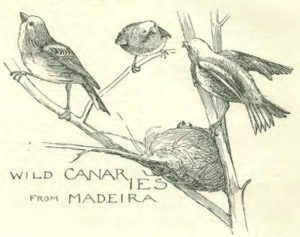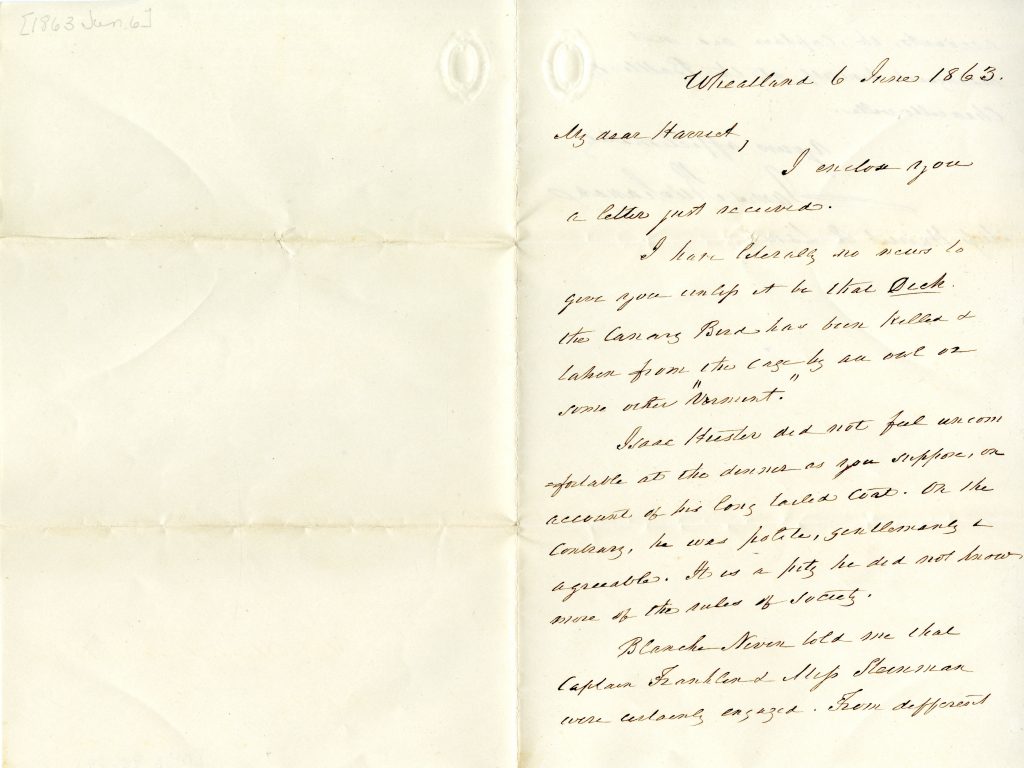The Tragic Tale of Dick the Canary

During President James Buchanan’s twenty years residing at Wheatland, he kept several animals (domesticated and otherwise) on the property. Buchanan’s beloved 170-pound Newfoundland, Lara, was a frequent presence at Wheatland and remains among the largest dogs to ever occupy the White House. Less traditional pets at Wheatland included two Sierra Nevada eagles. The eagles were presented to Mr. Buchanan by friends in California, and he kept them in a cage on the back lawn. Thankfully, when the King of Siam offered President Buchanan a herd of elephants, Buchanan had left office before King Mongut’s offer letter arrived to the White House. Buchanan’s successor, Abraham Lincoln, politely declined the generous gift.
Among Wheatland’s diverse selection of pets were Mr. Buchanan’s canaries. Canaries were a surprisingly popular pet in the Victorian Era. They were brought to Spain from an archipelago off the northwestern coast of Africa (called, appropriately, the “Canary Islands”) in the fifteenth century and originally limited to royal and aristocratic households. Canaries became a desirable pet for families across all social strata in Europe and America by the early-nineteenth century.

James Buchanan Family Papers, LancasterHistory.org.
Ever the classic Victorian gentleman, James Buchanan kept at least two caged canaries in the parlor at Wheatland. One of them was named Dick. Why do we know this name? On June 6, 1863, two years after his presidency, Buchanan penned his usual update to his beloved niece, Harriet Lane Johnston, who was living in Baltimore with her family at the time. In the first paragraph of the letter, Buchanan discloses the unhappy news that “Dick the Canary Bird has been killed + taken from the cage by an owl or some other ‘varmint.’” Considering the letter’s date, it is unsurprising that the windows of Wheatland may have been left open to allow a breeze to enter the home. Historical weather data indicates that, on June 7, 1863 (the following day), the temperature in Harrisburg reached 92˚F. What is surprising, however, is the idea that a bird of prey could swoop in through an open window and attack a caged songbird. Apparently, it happens more often than you’d think. We do not know the name of the other canary, nor do we know its fate, but one must assume that the tragic incident motivated Wheatland’s domestic staff to move the canary cage a little further away from the open windows.
This is an entry from History from the House:
A 200-year-old house once occupied by an American president has a lot of stories to tell. From an office in Wheatland’s former kitchen space, Museum Educator Stephanie Townrow digs up quirky, fascinating, and sometimes puzzling stories that reveal the hidden histories within President James Buchanan’s Wheatland. She invites readers to explore his home, meet his “little family,” and learn about the tumultuous political climate that surrounded his presidency.
From History From The House